Wheat harvest is usually either in full swing or finished in Southwest Kansas by this time of year, but an unusual amount of precipitation in recent weeks has delayed the cutting of the crop in our neck of the Wheat State. According to Mark Goudy, Kearny County Executive Director of Farm Services, this year’s crop may be hurt if farmers cannot get into their fields soon. The quality of the wheat will diminish because of the moisture content, and the longer the crop is in the field the greater the risk that inclement weather will do further damage. It is an uncommon dilemma in this area which has been plagued by drought the past several years, but the relationship between Mother Nature and wheat farmers has always been on shaky ground.
Turkey Red wheat was introduced into Kansas by Mennonite settlers from Russia almost as soon as Kansas was opened to settlement in 1854. Accustomed to growing the crop in a prairie climate, the Mennonites met with success and encouraged other farmers to plant wheat. As early as 1888, Kansas was being referred to as the “Wheat State.”
Like elsewhere in Kansas, Kearny County farmers began trying their luck at growing wheat as nearly as soon as the county was organized. Wheat did well under irrigation but did not respond to additional water as did sugar beets, corn, alfalfa, melons and other crops. As good as Turkey Red was, it lacked the drought resistance and yielding ability that was bred into later varieties. Successful wheat growing on dry land was not accomplished here until the 1930s when the practice of summer fallow was inaugurated. With this process, cropland is purposely kept out of production during a regular growing season. Resting the ground in this manner allows one crop to be grown using the moisture and nutrients of more than one crop cycle.
According to the Kansas State Historical Society, the standard farm size in the pioneering years was 160 acres which was not quite large enough for commercial ventures but more than what one farmer could plant. Like other industries, technology propelled farming into big business. Manual operations were replaced with draft animals enabling a single Kansas farmer to do the work of several men. In 1910, there were more than 24 million horses and mules on American farms with an average of three or four per farm. With three workhorses pulling a one-bottom walking plow, a farmer could break only about two acres in one day. With a two-bottom plow and a four or five horse-drawn sulky plow, he could plow five to seven acres.
As technology continued to advance, the way was paved for working larger areas of cropland in shorter periods of time. Threshing machines powered by steam traction engines in the 1870s and 1880s were replaced by internal combustion engines during the early 20th century. By 1938, the technology of tractor development had achieved what is known as a ‘dominant design.’ During World War II in the 40s, the U.S. Government was faced with the dilemma of how to provide both military tanks and tractors. On one hand, farmers were needed to produce more food than ever before, but many of their farmhands had been drafted. New challenges created innovation. Tractors got smaller and more powerful, self-propelled combines were introduced, and hydraulic systems made it possible to control larger implements.
The peak year of tractor production was 1951 during which 564,000 units were made. According to the U.S. Census of Agriculture, 1954 was the first time in recorded history that tractors outnumbered horses and mules on U.S. farms. Competing manufacturers began enticing farmers with more horsepower and more labor-saving features. In time, creature comforts became almost as important as the tractor’s performance. Enclosed cabs with heating and air conditioning, stereo systems and even built-in televisions make modern tractors quite comfortable in comparison with the machines of yesteryear.
In the 1950s, harvested crops were hauled to the elevators in small trucks that handled between 150 to 250 bushels. These were replaced by tandem dual-axle trucks with a load capacity of about 600 bushels. Now semi-trucks are used to haul the grain. Some of the most important developments for combine owners are advancements that have not only increased performance but operator’s comfort as well. The arrival of enclosed cabs in the 1970s and 1980s led to developments to manage the cab interior environment with reduced noise levels, dust suppression and air-conditioning. Major controls accessible in the cab enabled the driver to complete the starting procedure and carry out virtually all the operating adjustments without leaving the seat.
Kearny County’s modern farmers routinely embrace sophisticated technologies such as drones, robots, temperature and moisture sensors, aerial images, programmable variable rate applicators, the internet and GPS. With these tools, farming has become more profitable and efficient as well as safer and more environmentally friendly. These high-tech practices combined with hardy wheat varieties have helped Kearny County farmers do their part in securing that Kansas’s reign as the Wheat State continues. Last year 114,862 acres in the county were planted into wheat with an average yield of 35 to 36 bushels per seeded acre according to USDA statistics. This year’s production remains to be seen, but with a little help from Mother Nature, crews hopefully will be headed into the fields soon.
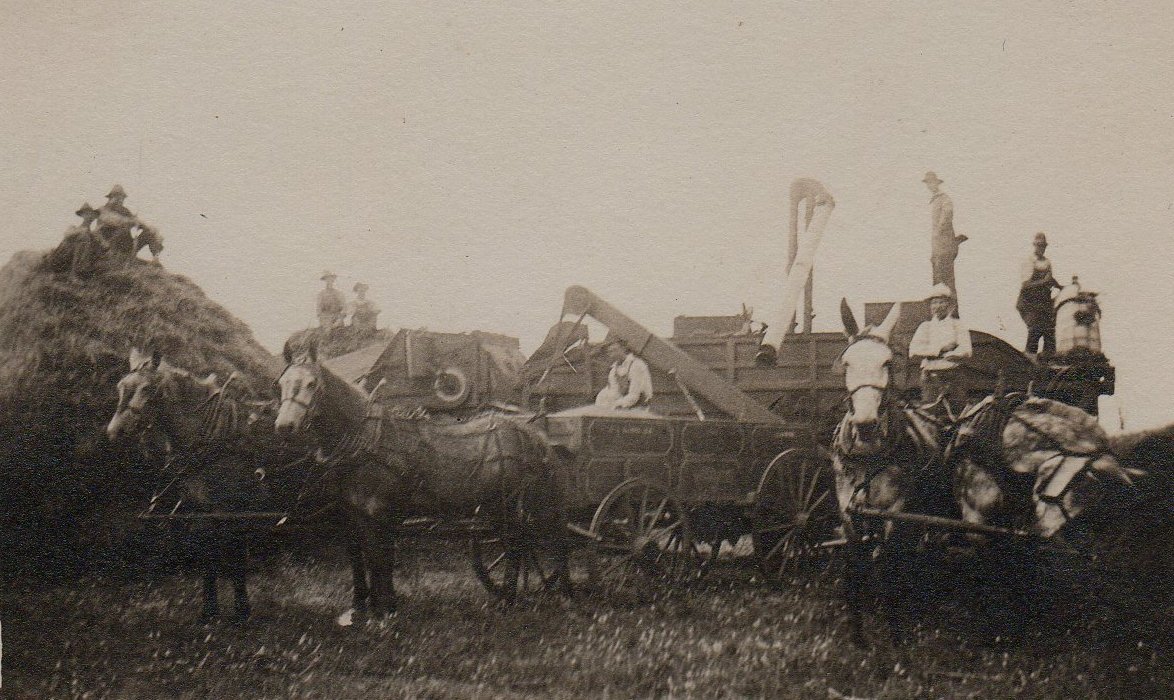
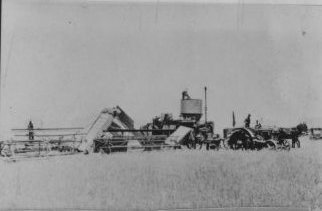


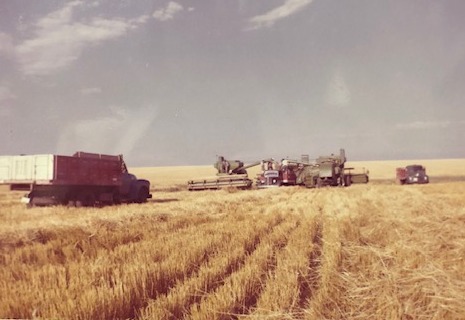
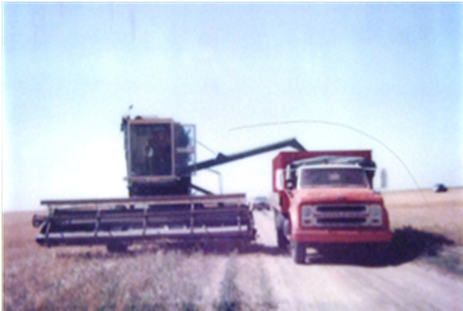
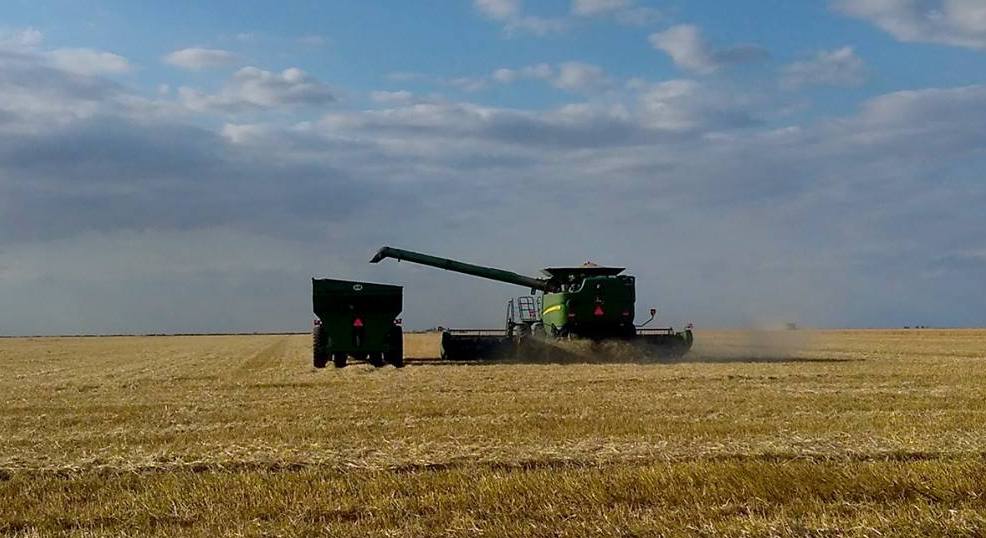
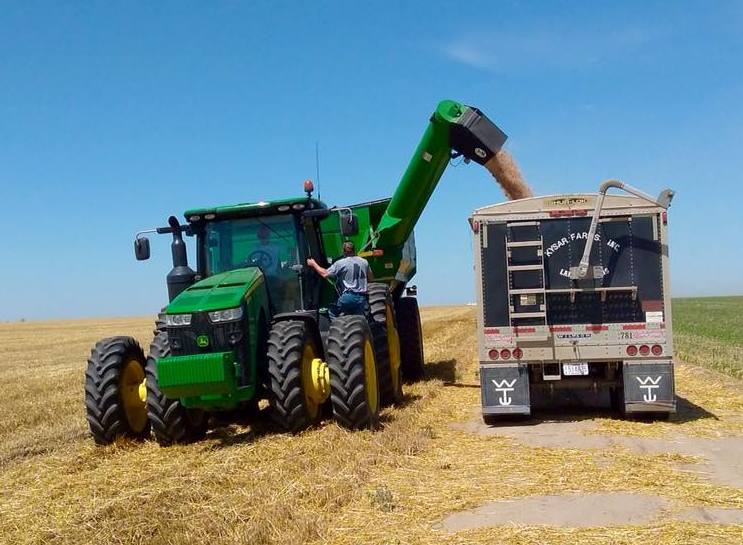
SOURCES: Kansas State Historical Society; Economic History Association; 1954 U.S. Census of Agriculture; “Wheat” by Iman Wiatt for History of Kearny County Vol. 1; Museum archives; and USDA.gov, with special thanks to Kearny County CED Mark Goudy, and Joyce Kopfman who retired from the U.S.D.A. – Farm Service Agency in 2004 after 27 years of service.
